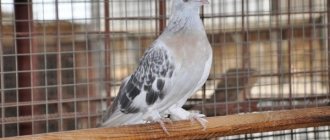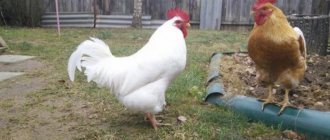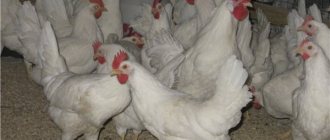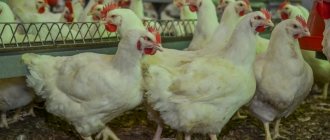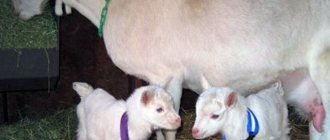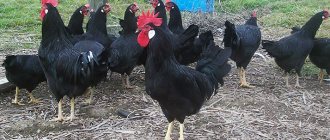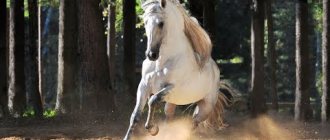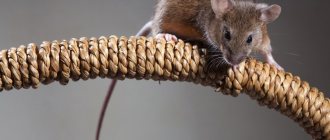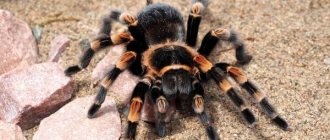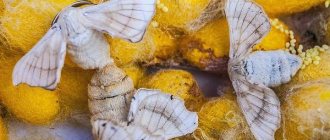Among all the variety of breeds, the naked-necked chicken looks special and even a little disgusting. She cannot be called the beauty of a private yard, and it is unlikely that the owners of this breed are guided by the goal of “pleasing their eyes.” However, despite their very unattractive appearance, these chickens are in great demand among poultry farmers, in particular due to the number of advantages that the bird offers its owner.
And in today’s publication we will present a full description of this Bare-necked bird, show its photo and publish reviews from farmers who are familiar with chickens first-hand.
History of origin
It is difficult to name the exact place of origin of this breed. However, the majority is inclined to believe that the homeland of this amazing bird is Spain, which is why the Naked-necked chicken is often called the Spanish chicken.
This miracle came to Russian territory from Romania and Hungary approximately 100 years ago.
How did such a strange breed appear? There are 2 main theories about this:
- The first says that Golosheyki became a “product” of breeding work as a result of crossing the Indian fighting breed with some other breed.
- The second theory is inclined to believe that this is simply a pathology, which subsequently began to be transmitted to a new generation.
This breed is most widespread in Transylvania, Austria and Moldova. It can also be found quite often in the southern regions of the Russian Federation.
Description of the breed
The appearance of representatives of this breed is quite specific. The body has the usual plumage, which is typical of any other breed, but the bird’s neck is completely bare. The bird's bare neck has a bright red color, which is practically no different from the color of the beard and crest.
Chicks are born with a bare neck. Therefore, it is simply impossible to confuse the naked-necked young with any other.
Representatives of this breed have a small area of plumage on their heads that looks more like a hairstyle.
The bird's earrings are bright red, as is its comb. The hens' faces are smooth and red in color. The eyes are large, red-red in color. The beak can be either dark or light.
The bird's body is compact in size, its chest is well developed, and its belly is rounded. The wings are rather long and loosely attached to the body. The paws are powerful and strong.
Representatives of the naked-necked breed come in a wide variety of colors. Among the main ones are:
- Black.
- Belykh.
- Redhead.
- Partridges.
- Motley.
- Gray.
- Blue.
Main characteristics
Standard
According to the standard, representatives of the bare-necked Spanish breed must have:
- trapezoidal torso;
- long, curved neck;
- wide, developed chest;
- flat, short back;
- red complexion;
- small head;
- leaf-shaped comb;
- deep red earrings;
- curved, yellow-gray beak;
- metatarsus to match the beak;
- large eyes, red-brown or brown in color.
The color of the metatarsus is usually wheat. In black and blue chickens, they are grayish or gray-yellow.
Peculiarity
A special gene, presumably resulting from a mutation, is responsible for the lack of plumage in the neck area of Spanish barenecks. On the remaining parts of the body the plumage is sparse.
Homozygous and heterozygous dominant chickens have this feature. When crossed in the second generation, approximately 80% of the chicks inherit the dominant gene. About 20% have recessive traits.
The skin in places where there is no feathering should have a pronounced, red color. The rest of the body has a pinkish-beige tint.
Colors
According to the standard, the Spanish barehead has white, blue, gray, red, black, partridge and motley colors.
Representatives with other feather color options are not allowed for breeding.
Weight
The weight of roosters at 2 years is 2.7 kg, chickens – 2.2 kg.
Purebred roosters, due to their highly developed pectoral muscles, are heavier than homozygous roosters with recessive traits. Therefore, breed membership is also determined by weight.
Chickens are a little lighter in weight and their muscles are not as developed. But in general they have the same characteristics of the breed as roosters.
Vices
Chickens of the Spanish bare-necked breed are subject to culling if they exhibit:
- presence of feathers on the neck (partial or complete);
- underdeveloped pectoral muscles;
- sickle-shaped tail;
- dark complexion;
- light skin tone of the neck;
- white earrings;
- small comb.
The breed of chickens is determined by compliance with the standard and the absence of external developmental defects. For example, small flaws in the shade of a feather are not a reason for rejection if no other defects are found.
Direction
Due to its exclusive exterior, the Spanish Barnacle is classified as an ornamental breed. Based on the type of productivity, it is classified in the meat and egg category. Chickens are suitable for producing eggs and are productive in meat production.
Chicken meat has high taste qualities and is highly valued in industrial and amateur poultry farming.
And breeders appreciated the productive potential of Spanish bare-necked chickens. They began to use the breed for crossing and producing meat-egg hybrids with increased productivity.
When purchasing, it is important not to confuse purebred barenecks and hybrids bred on their basis. In the second generation, crosses do not produce the same offspring.
Number of eggs
Spanish chickens begin laying eggs at 6 months.
In the first year, productivity is 160-170 eggs. With each subsequent year, this figure decreases by 10-12%.
Survival
During the first 3 weeks, up to 7% of chickens die. Survival rate during the first year is 85-90%.
The viability of Spanish naked-necked chicks depends on feeding, care and living conditions. The most common cause of death in young animals is acute infectious diseases.
Productivity
The Goloshka is a representative of universal breeds. That is, it can be kept both for the purpose of obtaining meat products and for the purpose of obtaining eggs.
Egg production rates are quite low when compared with the productivity of modern crosses. The maximum that can be squeezed out of a chicken is 150-180 eggs per year, and only under favorable housing conditions and a more or less normal diet.
Golosheki eggs are medium in size, approximately 55 to 60 grams. The shell is quite thick and creamy in color.
Despite the fact that the chickens have a bare neck, they tolerate low temperatures quite well and do not stop laying eggs in winter.
Laying hens of this breed take a long time to mature, approximately 6 months.
As for meat products, the weight of an adult rooster is in the range of 2.5-3 kg, while chickens weigh about 2-2.5 kg. The meat itself tastes like turkey.
Breeding naked necks
When forming a livestock, you need to take into account that there should be no more than 10 hens per 1 rooster; if there are more, not all eggs will be fertilized. This is not important if the bird is kept only to obtain eggs for food, but if chickens are needed, this norm must be adhered to.
As many poultry farmers note, bare-necked chickens are reluctant to sit on eggs and, knowing this feature of birds, the owners do not place eggs under the hens, but use a small home incubator.
To lay it in, you need to select the best material - eggs that are uniform in size, without cracks or stains on the shell, and as fresh as possible. It is advisable to fill the incubator tray completely to ensure the correct temperature and humidity conditions. The duration of incubation, like other chicken breeds, is 21 days.
Advantages and disadvantages of the breed
Many poultry farmers have different attitudes towards this bird. Very often people refuse to grow Holoshecks only because they are supposedly scary and cause some kind of disgust. In this case, the positive qualities of the bird are completely ignored. Nevertheless, despite its inexpressive appearance, the chicken is quite promising and has something to surprise poultry farmers. The main advantages of the breed include:
- Good taste of meat products.
- Friendly, calm and non-conflict character. Chickens get along well in a flock and are friendly with representatives of other breeds, as well as with smaller and larger poultry (geese, quail, pigeons, etc.).
- Chickens practically do not care in what conditions they are kept.
- Due to the fact that chickens do not have feathers on their necks, they are protected from parasites that mainly settle on the neck and crop of representatives of other breeds.
- Representatives of this breed are much easier to pluck.
- Chickens are equally well adapted to both heat and cold.
- Eggs have a high fertility rate. If the rooster is good, approximately 94 chicks will hatch from 100 eggs.
- A bald crop allows poultry farmers to know whether the bird has consumed enough feed or, conversely, whether it has been overfed. This allows you to properly plan the chicken’s diet.
As you can see, there are quite a lot of advantages. But chickens also have their downsides. The main negative aspects of Golosheyka include:
- It has a rather unattractive appearance, which is why many poultry farmers are disdainful of raising the breed, even without assessing its positive qualities.
- Holoshecks produce a fairly small number of eggs.
- Laying hens have a very poorly developed brooding instinct. No, they sit on nests quite often, but the problem is that chickens are the kind of species that get bored of it very quickly. For this reason, most often Goloshek is grown in incubators, and not in natural conditions.
Reviews
Bare-necked chickens are raised quite productively and often, so there are plenty of reviews about the breed.
They all boil down to the following advantages:
- Good survival rate of young animals - 95% is considered the norm.
- Excellent taste of meat and easier plucking process due to the absence of feathers on some parts of the body.
- Early egg laying, and hens continue to lay eggs even in December and January.
- Good productivity of laying hens - but this point is controversial for many, since the priorities of each bird owner are different.
- Pickiness and endurance, even at sub-zero temperatures.
- Good presentation of eggs.
There is basically only one minus, and it is quite subjective - the unsightly appearance of the birds.
Care and maintenance
In order for the chickens to have a good time, it is necessary to create optimal living conditions for them.
First of all, they pay attention to the chicken coop, since this is where the chickens will spend the night and spend all their time during the winter season.
The chicken coop should be dry, warm and well lit.
There should be no drafts in it, which could cause the development of diseases in the bird. But at the same time, it should not be a “closed box” in which there is no ventilation at all. It is necessary not only to ensure that the chickens receive fresh air, but also to remove unpleasant odors, in particular those formed due to poultry waste.
The floor is covered with a special bedding that will keep the room warm and also absorb all the moisture. The most commonly used flooring materials are:
- Straw.
- Hay.
- Peat.
- Sawdust.
The height of the litter should be at least 15 cm.
The chicken coop should also have drinking bowls, feeders and a container with wood ash. Wood ash is necessary for birds to clean their feathers and get rid of parasites such as fleas and ticks.
Water in drinking bowls should always be clean and available 24 hours a day. In summer it is changed twice a day, in winter - once a day. Also, periodically, as they become dirty, the drinking bowls are washed.
To prevent birds from knocking over feeders, they are placed along the wall. Also, in order to protect them from the paws of chickens (who like to squirm around in water and feed) and from their droppings, special nets are installed on drinking bowls, which do not restrict the bird’s access to provisions, but protect it from scattering and droppings.
Another important attribute is nests and perches. Nests are placed at a height of 50-60 cm from the floor. It is advisable to place them in shaded places that are convenient for collecting eggs. The ideal dimensions of the nests are 40x40 cm.
As for perches, they are built at the rate of 20 cm per individual. In this case, the distance between the perches should be at least 35 cm. The perches are built at a height of 50-60 cm from the floor on the opposite side of the chicken coop window.
The premises are periodically disinfected. Ideally – once every six months. Disinfection is necessary primarily to combat parasites such as fleas and ticks, which pose a serious problem not only for chickens, but also for the owner who enters the chicken coop to clean it or collect eggs.
We recommend reading: Description of the Wyandotte chicken breed
Important attention is paid to daylight hours. In winter, daylight hours become shorter, which requires artificial extension. Otherwise, the chickens will lay eggs even worse (and we remember that their productivity is not the highest anyway). Extend daylight hours using regular yellow incandescent lamps. The standard length of daylight, regardless of the age of the bird, is 15-16 hours.
Diseases
The innate immunity of this bird is good, but with gross violations of nutrition and hygiene in the poultry house, a decrease is observed, and the Golosheks can become ill with any of the known diseases.
The weak point of this bird is considered to be its legs, which are sensitive to hypothermia and prone to inflammation. The farmer needs to check their condition among the livestock.
- Parasites
- Infectious
- Other
Chicken mite
How to treat a chicken coop and how to treat a bird. Description of drugs and methods of control
Read
Coccidiosis
Thirst, loss of appetite, swelling, bloody droppings, anemia, weakness, poor coordination
Read
Ascariasis
Loss of appetite, liquid droppings, pale mucous membranes of the comb, limbs, ruffled plumage, lethargy, vomiting
Read
Amidostomiasis
Symptoms of the acute form: apathy, general weakness, decreased or lack of appetite, breathing problems, unsteady gait, retarded growth and development
Read
Prostagonymosis
Decreased mobility, loss of appetite, unsteady gait, bloating, fever, impaired egg laying, exhaustion
Read
Knemidocoptic mange (“lime foot”)
Acute symptoms: light gray bumps appear on the legs, the bird limps and stands on one leg, the cloaca and joints become inflamed, the beak is deformed
Read
Heteracidosis
Symptoms: indigestion, diarrhea, loss of appetite, lethargy, decreased egg production, retarded growth and development
Read
Trichomoniasis
Symptoms of the acute form: fever, depression and loss of appetite, diarrhea with gas bubbles and a putrid odor, enlarged goiter, difficulty breathing and swallowing
Read
Pullorosis (typhoid fever, salmonellosis)
Weakness, lack of coordination, drooping eyelids, difficulty breathing, lack of appetite, indigestion
Read
Colibacillosis
Lack of appetite, thirst, sudden increase in temperature, pale scallops, diarrhea
Read
Pasteurellosis
Fever, foamy mucus, change in stool color, refusal to feed, thirst, lethargy, wheezing, heavy breathing
Read
Marek's disease
Paralysis of the limbs, difficulty breathing, severe exhaustion and loss of strength, refusal of food and water, pallor of the scallop
Read
Gumboro disease
Diarrhea, loss of appetite, trembling legs and head, sudden death
Read
Laryngotracheitis
Weakness, swelling of the neck, difficulty breathing, cough, wheezing, blood clots in the mucus released when coughing, lack of appetite, indigestion
Read
Bird flu
Refusal to eat, anorexia, diarrhea, purulent discharge, hoarse breathing, greenish-brown droppings, seizures, darkening of the ridge
Read
Newcastle disease
Decreased appetite, fever, respiratory distress, immobility, conjunctivitis, bloody diarrhea
Read
Apteriosis
Complete or partial absence of plumage, loss of tail feathers, broken embryonic fuzz in young animals, delayed growth of plumage, pecking
Read
Pterophagy
Plucking and eating feathers. What is the reason, why does it require urgent intervention and how to prevent the disease?
Read
Yolk peritonitis
Symptoms of the acute form: loss of appetite, gray-green color of feces, sudden drop in egg production, calcareous deposits on the shell, bluish tint and baldness of the abdominal skin
Read
Cloacite
Symptoms: depressed state, decreased appetite, weight loss, increased need for water, loss of plumage, inflammation and bulging of the cloaca, the presence of ulcers on the mucous membrane, decreased egg production
Read
Chicken diet
There are no special requirements for the diet of Golosheykas. However, the more balanced the diet, the faster the chickens will gain weight, the stronger their immunity will be and the higher their egg production rates. Poultry farmers recommend including in the diet:
- Fresh grass.
- Vegetables. They can be given either fresh or added to mash.
- Cereals. They should form the basis of the diet. Cereals are given both whole and ground. It is also recommended to give the bird sprouted grain, as its consumption stimulates an improvement in egg production.
- Sources of calcium. The most common sources of calcium are: chalk, crushed shell rock, crushed eggshells. The ideal option is crushed shell rock. Eggshells are dangerous because a chicken can recognize them as eggs. If this happens, there is a high probability that the chickens will begin to peck at their own eggs to obtain calcium. As for chalk, it is often prohibited to give it to birds, as it can stick together in the stomach, thereby causing blockage of the gastrointestinal tract.
- Mash. It is advisable to give them at lunch. The mash is distinguished by the fact that it contains a large amount of useful substances. You can add cereals, vegetables, bone meal, salt, etc. to the mash. In addition, they can be cooked in meat broth.
- Yeast. They are necessary when you need to accelerate weight gain.
Chickens are fed three or four times a day. In the summer, it is advisable to give the chickens dry food, and in the winter, the emphasis is on mash.
What to feed?
Owners who are just starting to get acquainted with callos need not worry about what to feed this strange bird. She is unpretentious in food, and you can feed her the same as ordinary chickens: grains, vegetables, dairy products, clover. Laying hens should also be fed sprouted grain. It would be a good idea to include vegetables in their diet. Thus, the bird will receive the necessary nutrients.
Digestion of naked necks has its own characteristics. Sand is an excellent food supplement for them. It is also advisable to add corn, yeast, ground eggshells (it contains the necessary calcium) and chalk to the birds’ diet.
Birds do not neglect feed, but the owner must understand that only balanced feed will give chickens all the necessary vitamins and microelements. The daily food requirement for an adult weighing 2 kg is 130 g. For every subsequent 250 g of the neck's weight, there is 10 g of feed additive. The presence of water in the feeder must be constant.
Feeding and keeping chickens
Naked chicks are born quite vulnerable to environmental conditions. Therefore, it is very important to maintain optimal conditions for keeping and feeding chickens:
- After birth and until 5 days of age, chickens are kept at a temperature of +30 degrees Celsius.
- From the 6th day of life to the 9th day of life, the temperature is lowered by 2 degrees, bringing it to +28 degrees Celsius.
- Then, over the course of 4 days, the temperature is lowered by another 2 degrees, bringing it to +26 degrees Celsius.
- Then the temperature is lowered daily, dropping it to +18 degrees Celsius.
The young animals are fed either starter feed or boiled egg whites. Gradually, fresh cottage cheese and fresh grass are introduced into the diet. Until the 10-day period of life, young animals are fed every 2 hours, 6 times a day. From the second month of life, the bird can already be given coarser food, such as whole corn.
To strengthen the body, young animals can be given fish oil and chalk.
